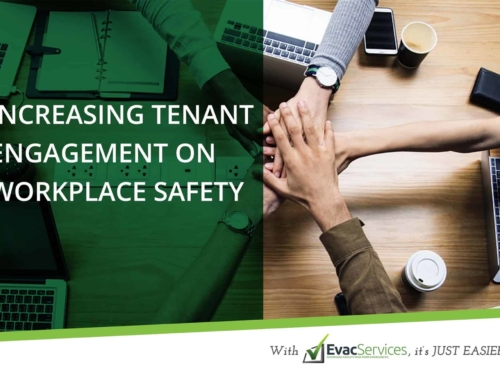Prevention, as they say, is always better than the cure. This is just as applicable as having an emergency procedure, unpredictable as emergencies usually are. Although it is never actually possible to determine when a natural calamity or human-made disaster will occur, it is still worth taking on safety measures to mitigate the potential damage it will cause. This is why an emergency procedure is so important.
Having a well-established emergency procedure for an unwanted situation is best. However, it must first be noted that there are many different situations you may face, each one calling for precise procedures that should cater to and address the situation appropriately. When you are planning for emergencies, consider the emergencies that are most likely in your environment.
These may include:
- Earthquake
- Flood
- Severe weather
- Medical emergency
- Toxic emission
- Hazardous materials incident
- Chemical or biological accident
- Structural instability
- Building instability
- Bomb threat/ mail handling incident
- Building invasion/ armed intruder
- Civil disorder
- Terrorism
Taking the different nature of each situation into account should allow you to be able to help address them as systematically as possible. The end goal for all of this, however, remains the same: to ensure the maximum safety of all building occupants.
Australian regulatory requirements, in light of this goal, has mandated all buildings, structures and workplaces require emergency procedure. With proper communication, it is then expected that these emergency and safety programmes will trickle down to every occupant.
Ideally, the emergency procedures will reflect the requirements set by the Workplace Health and Safety Act 2011, in conjunction with whatever local legislations, regulation code or standard applicable.
Planning for an Emergency requires a comprehensive and workable emergency procedure to be in place, the following considerations must be made first:
- Size of the facility
- Number of storeys
- Type of building construction
- Identified actual and potential site hazards
- Number of people on site
- Means of escape
- Surrounding area
It is imperative that the design of the emergency procedure be tailor-fit to the structural identity of the building. Although there may be requirements that are implemented across the board, the final version of the emergency plan must still be tailored enough as to specifically cater to the needs and capabilities of the structure itself.
For example, there are a set number of normal fire escape routes for every building considered to be a high-rise. Depending on the actual size of the structure, however, the number of available fire exits will vary. The overall requirement, however, is that there must be available fire exits per floor, all of which must be unobstructed and easily accessible.
It is also important that the emergency procedure drawn up by those responsible is regularly updated, to account for changes in the building structure when necessary, or for example, in the profile of the building’s tenants. Also, it must be noted that planning for emergencies do not only stop at having a document laying out the Do’s and Don’ts during an emergency situation. It must also be properly disseminated to all parties of interest (building owners, tenants and guests alike) in simple and definite language, complemented by supporting training and skills training exercises.
The Emergency Planning Committee (EPC)
Those appointed to prepare and maintain the emergency procedure are known as the Emergency Planning Committee (EPC) . the is made up of the Chief Warden (the leader of the warden team), facility management and key tenant representatives. It is also recommended to have a Fire Safety Advisor (FSA) in attendance to provide advice and support to the committee so that they may be able to come up with and implement a plan that is most suited for their facility, organisation or company.
In a nutshell, the objectives of the EPC are the following:
- Develop emergency plan and procedures
- Establish and empower emergency control organisation (ECO)
- Review and improve the implemented emergency plans and procedures
- Ensure the building’s compliance with standards and regulations
Included in their designated responsibilities are:
- Determining the population within the jurisdiction of the facility
- Ensure proper appointment of ECO members
- Arrange training of ECO personnel and conduct evacuation exercises for all
- Ensure prompt replacement of vacated ECO positions
- Review effectiveness of evacuation exercises and provide procedure improvements
- Determine who will implement emergency procedures
- Ensure that ECO personnel instructions will be prioritised in implementation over standard management structure
Emergency Procedure Contents
At its most basic, the emergency procedure must be drawn up according to the stipulations of Australian Standard 2745:2010 (and the Queensland Building Fire Safety Regulations 2008 if relevant). It should contain the instructions for the coordination and commencement of evacuation from the building, as well as clearly identify the types of emergency alarms and equipment, and their proper usage. The document must also provide clear instructions to the tenants on what they should do during fire and evacuation situations.
Because clear communication is the utmost priority, contact details of the key building stakeholders, as well as that of the Fire Safety Advisor, must also be contained in the document.
Implementation of Emergency Procedure
As can be gathered from the aforementioned requirements, the emergency procedure is a paper based document to be used to prepare for an emergency. During an emergency the occupants must know what is contained in this document, practice the procedures it contains and know instinctively what to do in an emergency situation. , Three important elements will dictate how successful having an emergency procedure will be if the situation arises necessitating its use: dissemination, training, exercises and tests.
Dissemination – Of course, the primary goal of the emergency procedure is to be able to spread the correct and most useful information to everyone within the building. A procedure document is useless if a handful of people are aware of the required procedures. Everyone should be self-sufficient in times of emergency.
Training – It’s obviously difficult to keep people from panicking during an emergency situation. The aim, therefore, is to train them on what to do so that they will be able to stay calm and collected, so that they may increase their chances of making it out of the building safely or being able to lock themselves inside if there is a requirement to lockdown the building.
Exercises and tests – are important to determine at which level of preparedness the building tenants are at. It should also be a good way to check if the emergency plans are indeed feasible; it not, then proper and prompt changes may be made.
Emergency procedure should be taken seriously. Quite literally, the lives of people are at stake here. The success of it, however, depends not only on how well-written it is but most importantly, on how well it can be executed by all.
Do you need more information about Emergency Procedure? We are here to help you! Just complete the form below, and we’ll get back to you shortly. Or visit 100% Compliance website to see how you compare.







Leave A Comment